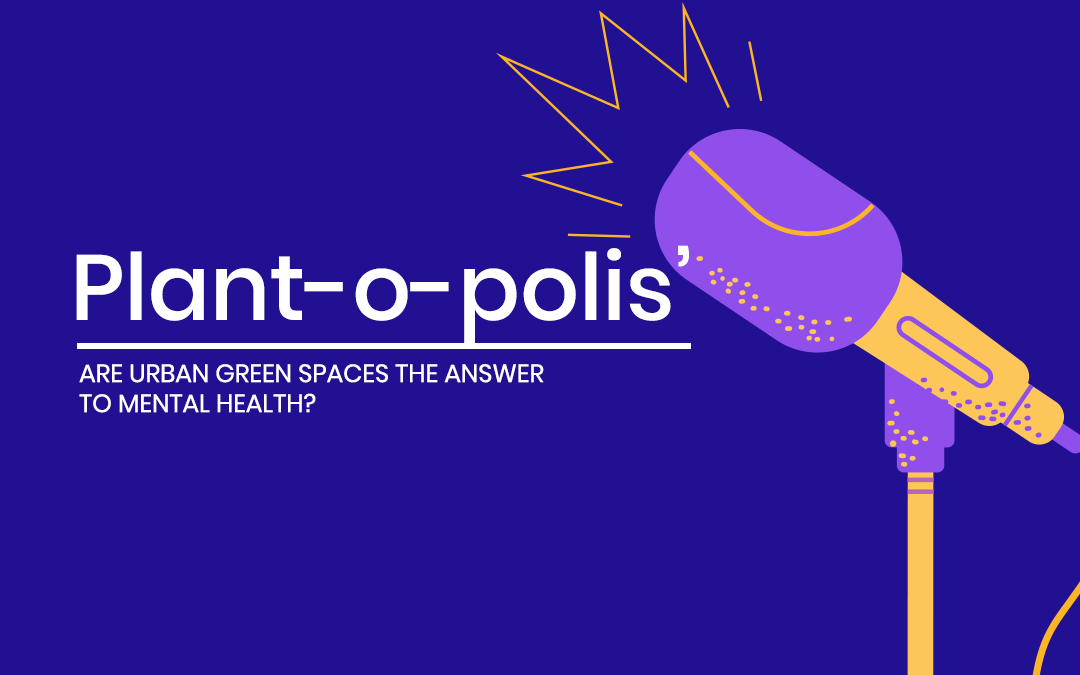Plant-o-polis’: Are urban green spaces the answer to mental health?
Abstract
‘Plant-o-polis’ is a podcast series shedding light on urban health topics beyond borders. ‘Are urban green spaces the answer to mental health?’ This episode looks at the connection between urban green spaces and human health, zooming in on mental health, exacerbated social vulnerabilities and the relevance of COVID-19. We interview Raphaël Loubert, founding member of SOWoods (http://www.sowoods.be), a real-life project in its infancy that is on a mission to plant mini-forests in cities with the potential to be socially innovative. In an increasingly urbanized world, urban green spaces do matter; people more than ever appreciate their beauty and benefits. The studies cited from across the globe verify the positive link between nature and reduced mental health illnesses. We look at urban green spaces from the lenses of justice and governance and discuss approaches to sustainable development and Goal 3 on Good Health and Wellbeing of the United Nations 2030 Agenda.
Sources and further readings
Bartmann, J. (2018). Gameshow Brazz [Song]. On Public Domain Soundtrack Music: Album One [Album]. https://pixabay.com/fr/music/maison-gameshow-brazz-658/
Black, Y. (2019, September 9). Why doctors are prescribing gardening for anxiety and depression, instead of medication. The Independent.
https://www.independent.co.uk/property/house-and-home/pets/news/anxietydepression-nhs-mental-health-gardening-a9090256.html
Braçe, O., Suárez-Cáceres, G. P., & Garrido-Cumbrera, M. (2019). Relations between
frequency of visits to urban green spaces and mental health. Journal of Transport &
Health, 14, 100760. https://doi.org/10.1016/j.jth.2019.100760
Brunier, A., & Drysdale, C. (2020, October 5). COVID-19 disrupting mental health services in most countries, WHO survey. World Health Organization.
https://www.who.int/news/item/05-10-2020-covid-19-disrupting-mental-health-servicesin-most-countries-who-survey
Enssle, F., & Kabisch, N. (2020). Urban green spaces for the social interaction, health and well-being of older people — An integrated view of urban ecosystem services and socio-environmental justice. Environmental Science and Policy, 109, 36-44.https://doi.org/10.1016/j.envsci.2020.04.008
Moulaert, F., MacCallum, D., & Hillier, J. (2013). Social innovation: Intuition, precept, concept. In: F. Moulaert et al., (Eds). The international handbook on social innovation: Collective action, social learning and transdisciplinary research (pp. 13-24). Edward Elgar.
Ostrom, E., & Cox, M. (2010). Moving beyond panaceas: A multi-tiered diagnostic approach for social-ecological analysis. Environmental Conservation, 37(4), 451-463. https://doi.org/10.1017/S0376892910000834
Quality Online Media. (2020). Chill Future Beats [Song].
https://pixabay.com/fr/music/battements-chill-future-beats-849/
Riaz, A., Younis, A., Ali, W., & Hameed, M. (2010). Well-planned green spaces improve medical outcomes, satisfaction and quality of care: A trust hospital case study. Acta Horticulturae, 881, 813-818. https://doi.org/10.17660/ActaHortic.2010.881.133
Sandifer, P. A., Sutton-Grier, A. E., & Ward, B. P. (2015). Exploring connections among nature, biodiversity, ecosystem services, and human health and well-being: Opportunities to enhance health and biodiversity conservation. Ecosystem Services,12, 1-15. https://doi.org/10.1016/j.ecoser.2014.12.007
SOWoods. (2020a). SOWoods: Création de micro-forêts en milieu (péri)urbain pour et avec les organisations [SOWoods: Creation of micro-forests in (peri) urban areas for and with organizations]. http://www.sowoods.be/fr/
SOWoods. (2020b). Qu’ est-ce qu’une micro-forêt? [What is a micro-forest?].
http://www.sowoods.be/fr/definition-micro-foret/
SOWoods. (2020c). La micro-forêt et ses bienfaits [The micro-forest and its benefits].
http://www.sowoods.be/fr/bienfaits/
Sscheidl. (2020). Modular Ambient 04 [Song]. https://pixabay.com/fr/music/ambiantemodular-ambient-04-792/
Tamosiunas, A., Grazuleviciene, R., Luksiene, D., Dedele, A., Reklaitiene, R., Baceviciene, M., Vencloviene, J., Bernotiene, G., Radisauskas, R., Malinauskiene, V., Milinaviciene, E., Bobak, M., Peasey, A., & Nieuwenhuijsen, M. J. (2014). Accessibility and use of urban green spaces, and cardiovascular health: Findings from a Kaunas cohort study.
Environmental Health, 13(1), 20. https://doi.org/10.1186/1476-069X-13-20
Vlahov, D., Galea, S., & Freudenberg, N. (2005). The urban health “advantage.” Journal of Urban Health, 82(1), 1–4. https://doi.org/10.1093/jurban/jti001
